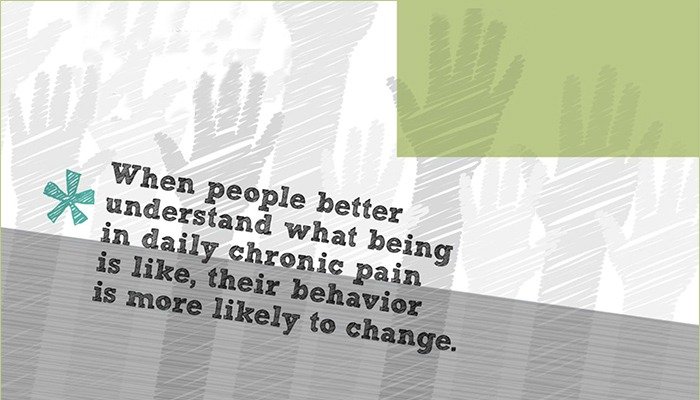Got a headache? Try breathing!

Dr. Dawn C. Buse, PhD, recommends diaphragmatic breathing along with relaxation techniques to help the body relax and rid itself of pain. We caught up with Dr. Buse to ask her more about her headache research, treatment philosophy and the guided imagery audio files she created to help pain sufferers.
PP: Headaches have been around…forever! Are there really more new treatments to be discovered?
DB: Yes! The science of headache treatment and management is constantly growing. There are recent developments in all types of therapies, which can give hope to those who suffer from headaches – especially migraines. Researchers are looking into new classes of medications for migraine acute and preventive treatment. In terms of interventions, nerve stimulators and implantable devices are being tested in many forms. Mindfulness, stress management, and cognitive behavioral therapy are evolving as behavioral treatments. MRIs have given us especially interesting insights into how the human brain responds.
PP: What attracted you to your field of research in headaches and migraines?
DB: Headaches and pain are almost universal human conditions. Most people experience both multiple times during their lives. And unfortunately, some people live with chronic pain, headaches and other conditions. Much like the common cold, these conditions are common and yet there still remains so much to be discovered. This is an exciting time in headache and pain research and care with new science and treatments being developed that may provide significant relief and help patients return to living their lives more fully as they deserve.
PP: Tell us about the use of relaxation and guided imagery audio files for headache treatments.
DB: Research has proven that bio-behavioral techniques such as relaxation training, mindfulness meditation and visual imagery can help people who experience headache and other chronic pain conditions both manage pain and reduce anxiety, distress and related conditions that often develop as a result of chronic pain. In my clinical practice, many patients experience at least temporary relief of reduction of pain through meditation and relaxation practice, as well as benefits in other aspects of life as well. I created these guided visual imagery exercises and a website where people could access them free of charge so that anyone who wanted to learn relaxation practice and meditation would have that opportunity.

PP: How does using relaxation/meditation work to treat pain related illnesses?
Research has proven that bio-behavioral techniques such as relaxation training and visual imagery can help people who experience headaches by giving them tools to manage their pain. Some people use relaxation techniques in addition to medication; others may use them instead of medication, such as women who are pregnant or nursing. Some techniques require professional supervision while others can be learned and practice on your own.
When you are under stress or feel pain, your body activates the “fight or flight response”. This type of response made a lot of sense for our caveman ancestors who were faced with dangers, such as saber tooth tigers! Unfortunately in today’s world we experience stress more of an emotional or cognitive type rather than a physical type. However, our bodies still respond as if we are being faced with a saber tooth tiger. This is a problem when someone is having a headache or pain flare-up.
The relaxation response is the opposite of the fight or flight response. There are many ways to activate the relaxation response including diaphragmatic breathing, visual imagery, and meditation. There are other things that you can do as well, such as listening to pleasant music or engaging in any pleasant activity that you enjoy will bring about this type of response. Doing so may help avoid a headache in the first place or reduce the pain of a headache that you already have.
PP: What’s the best piece of advice you can give a headache or migraine sufferer?
Getting an accurate diagnosis is an essential step towards getting the right treatment plan. Depending on what type of headache you have, there are a range of effective treatments available. In addition, there are many things you can do that can help reduce the frequency, severity, and impact of your headaches on your life. The most important are:
- Identify your triggers, if you have any, and avoid them where possible
- Maintain a healthy lifestyle which includes good sleep hygiene, regular exercise or physical activity and other healthy practices
- Practice relaxation and stress-management techniques regularly
- Take time for yourself
There are a lot of reasons to feel positive about the future. Many new treatments are currently being tested, and remember that headaches are one of the few chronic conditions that gets better with age – so maintain hope
PainPathways Magazine
PainPathways is the first, only and ultimate pain magazine. First published in spring 2008, PainPathways is the culmination of the vision of Richard L. Rauck, MD, to provide a shared resource for people living with and caring for others in pain. This quarterly resource not only provides in-depth information on current treatments, therapies and research studies but also connects people who live with pain, both personally and professionally.
View All By PainPathways






